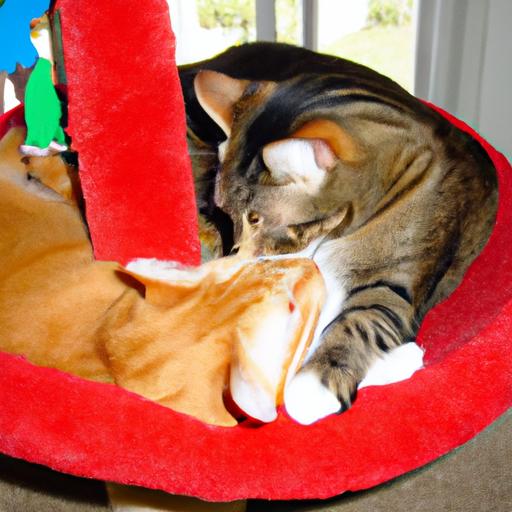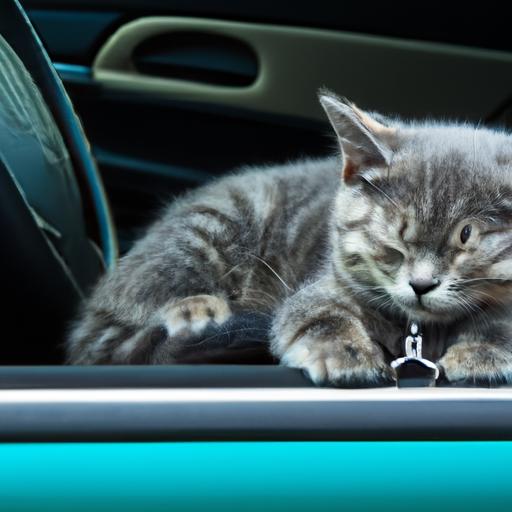
Cat Behavior: Exploring Closet Napping
Discover the reasons behind “Cat Behavior: Exploring Closet Napping.” Understand why cats choose closets for napping and how to create a safe environment.
Introduction
Have you ever wondered why your feline friend has a penchant for napping in the closet? Understanding cat behavior is crucial for providing them with a safe and comfortable environment. In this article, we’ll delve into the fascinating world of closet napping and explore the reasons behind this peculiar behavior.
Cat Behavior: Closet Napping Explained
Cats are notorious for seeking out cozy nooks and crannies to indulge in their much-needed rest. Closets offer the perfect hideaway for them to unwind and recharge. Let’s delve into the reasons why cats tend to choose closets for their napping adventures.
-
Security and Privacy
Cats are instinctively drawn to enclosed spaces as they provide a sense of security and privacy. Closets offer a secluded sanctuary where they can retreat from the hustle and bustle of the household. It’s akin to having their own personal fortress, shielding them from potential threats. -
Comfort and Warmth
Closets often have soft, warm materials such as clothing or blankets, making them an ideal spot for a cozy nap. Cats are naturally attracted to warmth, and closets provide a snug environment that helps regulate their body temperature. It’s like having a toasty blanket fort to snuggle into on a chilly day.
Signs that your cat may be interested in closet napping include frequent exploration of closets and finding them sleeping or lounging inside. These behaviors indicate their preference for this hidden retreat.
However, it’s important to be aware of potential risks and dangers associated with closet napping:
-
Trapped or Locked Inside the Closet
Cats are curious creatures, and they may inadvertently find themselves trapped inside closets, especially if they are closed without our knowledge. Always ensure your cat has a way to exit the closet to avoid any distressing situations. -
Exposure to Harmful Substances or Objects
Closets often house cleaning supplies, chemicals, or items that can be dangerous if ingested. Be cautious of what you store in your closets to prevent your feline friend from coming into contact with hazardous substances.
FAQ about Cat Closet Napping
Let’s address some common questions regarding closet napping in cats:
Q: Can closet napping be a sign of anxiety or stress in cats?
A: While closet napping can be a comforting activity for cats, it can also indicate anxiety or stress. If your cat consistently seeks refuge in the closet and exhibits other signs of distress, such as excessive hiding or changes in behavior, it’s important to assess their overall well-being and consult a veterinarian if needed.
Q: How can I encourage my cat to nap in a designated area instead of the closet?
A: Creating a designated cozy space for your cat’s napping needs can help redirect their attention from the closet. Provide comfortable bedding, toys, and a scratching post in a quiet area of your home. Positive reinforcement, such as treats or praise, can also help encourage them to use their designated nap spot.
Q: Is it necessary to provide special bedding or accessories for closet napping?
A: While not essential, having soft bedding or blankets in the closet can enhance your cat’s comfort during their napping sessions. Cats are attracted to textures, so providing cozy materials can make the closet even more appealing to them.
Q: What should I do if my cat becomes trapped inside the closet?
A: If you discover your cat trapped inside the closet, remain calm and open the door as soon as possible. Avoid scolding or punishing them, as this may create negative associations with the closet. Instead, ensure they have access to their designated nap area and gradually discourage closet exploration.
Conclusion
Understanding cat behavior is key to providing a nurturing environment for our feline companions. Closet napping offers cats a sense of security and comfort, but it’s important to be mindful of potential risks associated with this behavior. By creating designated nap areas and ensuring their safety, we can promote their overall well-being. So, the next time you find your cat cozied up in the closet, remember the reasons behind their choice and provide them with a space they truly love.
Remember, your furry friend’s happiness is paramount, and catering to their unique behaviors and preferences will strengthen the bond you share.




















